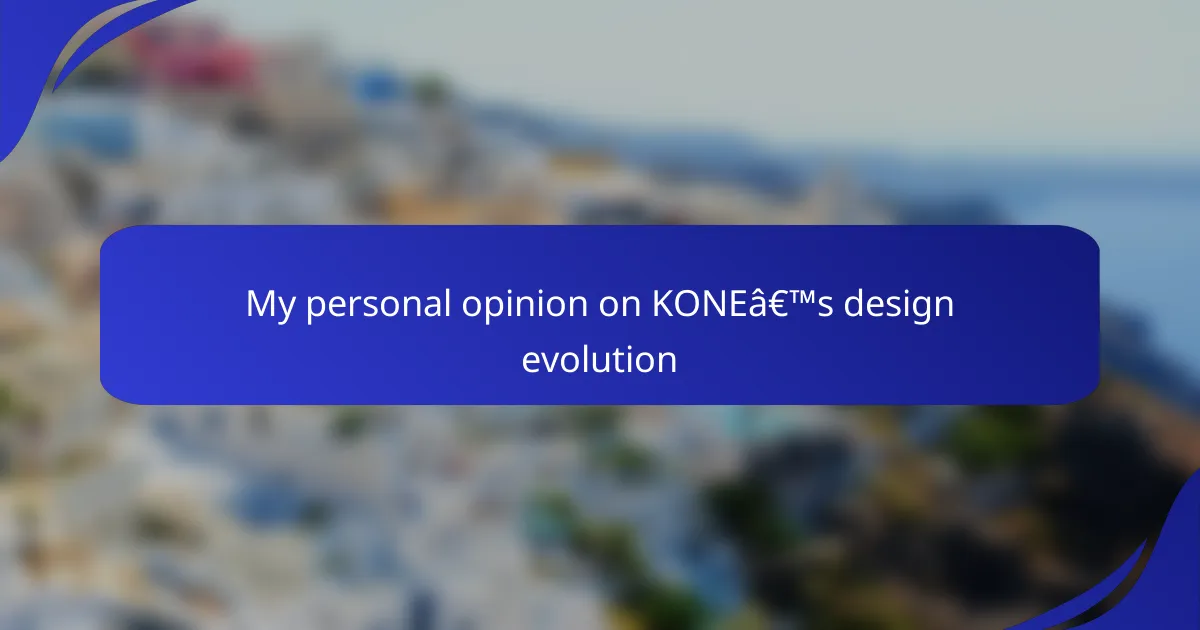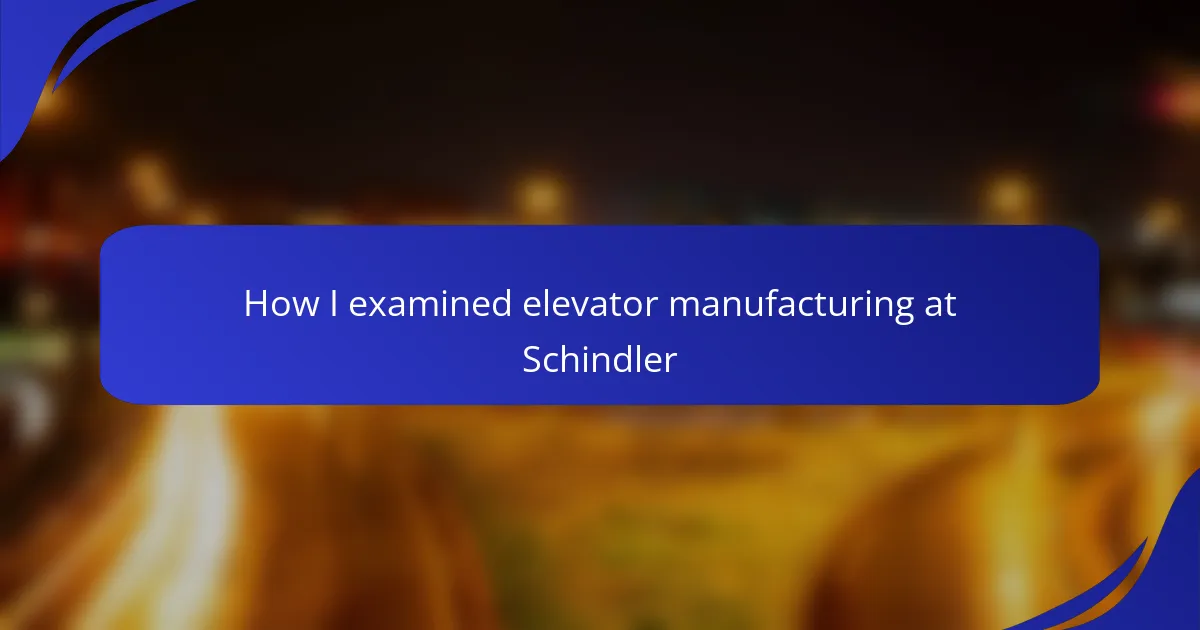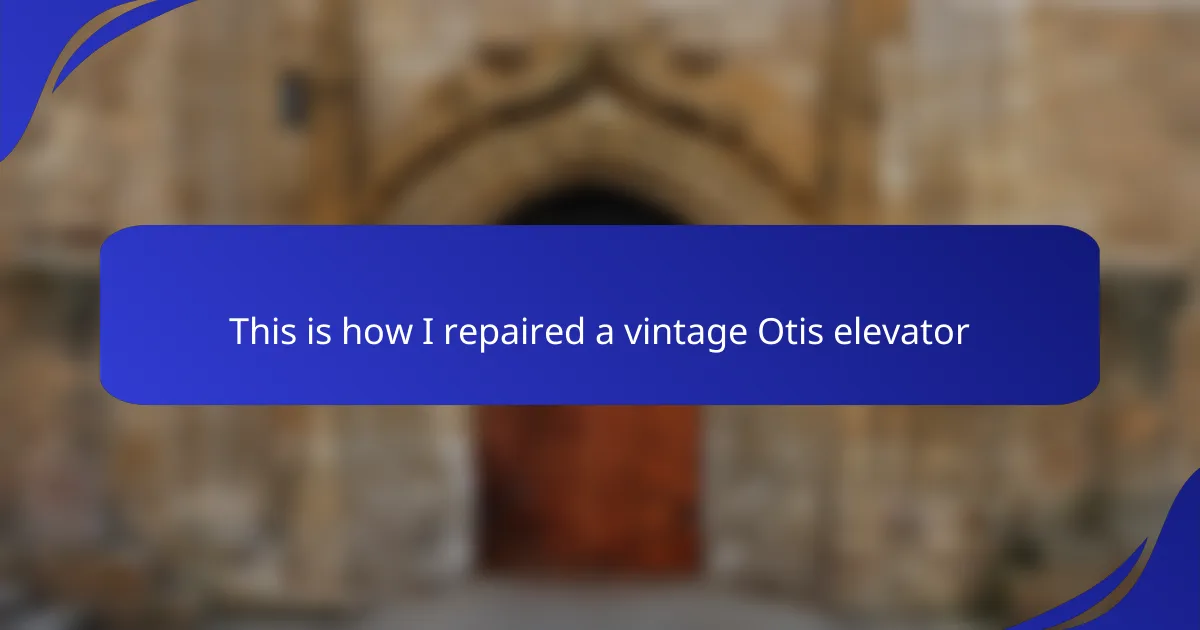Key takeaways
- The elevator industry has evolved from simple systems to sophisticated, energy-efficient designs, with KONE leading in sustainability and innovation.
- Key milestones include Elisha Otis’s safety elevator design, the introduction of electric elevators, and KONE’s MonoSpace and UltraRope technologies.
- KONE focuses on blending aesthetics with functionality, enhancing user experience through intuitive designs and smart technologies.
- Future trends point towards increased personalization, smart technology integration, and a continued emphasis on environmentally-friendly solutions in elevator design.
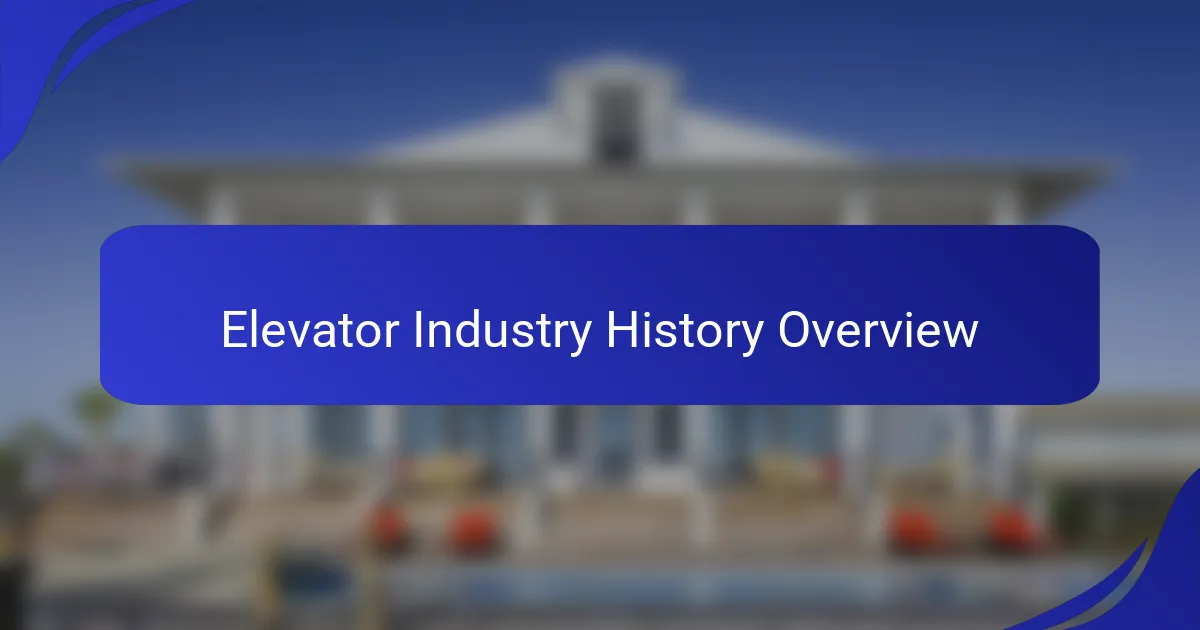
Elevator industry history overview
The elevator industry has a rich history that reflects innovation and the evolution of technology over time. From the early days of the simple rope-and-pulley systems to the complex, computer-controlled elevators of today, each advancement has played a crucial role in our urban landscapes. I remember, during a visit to a historic building, being struck by the ornate designs of antique elevators that not only transported people but also served as an architectural statement.
Key milestones in elevator industry history include:
- The invention of the first safety elevator by Elisha Otis in 1852, revolutionizing vertical transportation.
- The introduction of electric elevators in the late 19th century, which drastically changed building designs and functionality.
- Modern advancements like machine-room-less (MRL) elevators, which maximize available space and improve energy efficiency.
- KONE’s focus on sustainable design, showcasing an industry shift towards environmentally-friendly building solutions.
These developments tell a compelling story not only about technology but also about how we navigate our world.

Key milestones in elevator design
Key milestones in elevator design truly showcase how innovation can transform an industry. KONE has played a significant role in this journey, constantly pushing the boundaries of what elevators can do. One of the most notable milestones was the introduction of the KONE MonoSpace elevator in the 1990s, which revolutionized traction technology and marked a shift towards energy-efficient designs. I remember the first time I encountered one; the smoothness of the ride was a game-changer.
Another pivotal moment was the launch of the KONE UltraRope in 2013. This technology allowed for taller buildings and improved elevator performance. I felt a sense of awe witnessing how this advancement could open new horizons for urban architecture. These milestones highlight KONE’s commitment to design and sustainability, which, for me, resonates deeply with the modern vision of our cities.
| Milestone | Year |
|---|---|
| KONE MonoSpace Introduction | 1996 |
| KONE UltraRope Launch | 2013 |
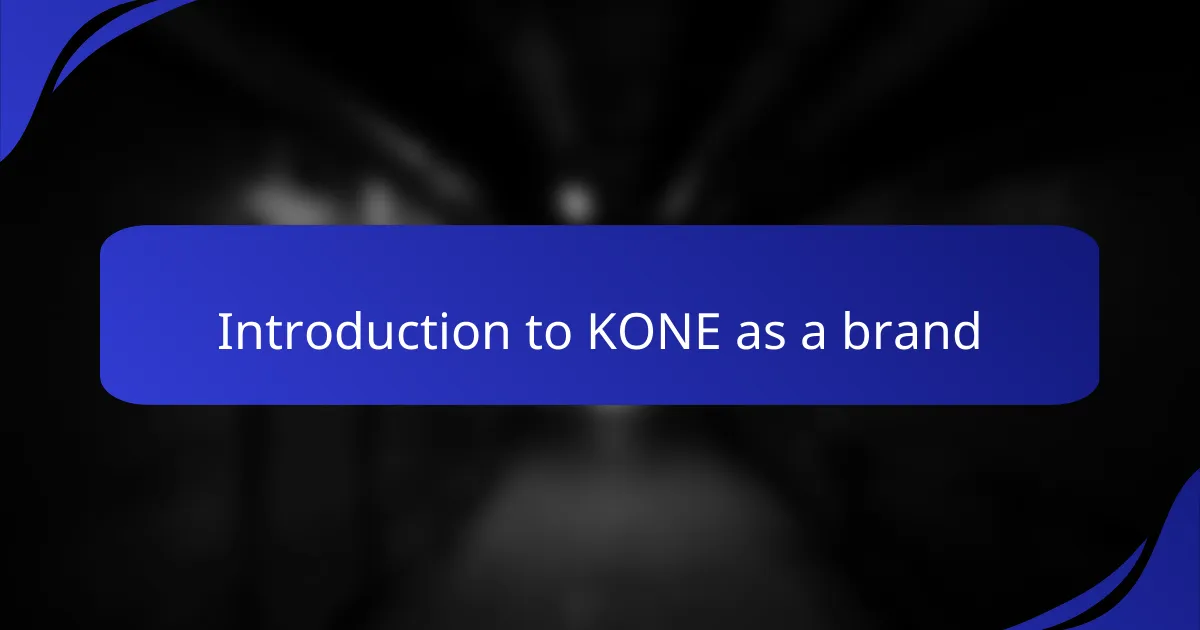
Introduction to KONE as a brand
KONE has established itself as a prominent name in the elevator industry, embodying innovation and quality since its inception in 1910. I’ve always admired how they blend advanced technology with striking design, creating elevators that are not just functional but also visually appealing. When I think about KONE’s journey, I can recall many structures where their elevators seamlessly integrate into the overall architecture, enhancing the user experience.
What truly sets KONE apart is its commitment to sustainability, a principle that’s resonated with me throughout my career. Their focus on reducing energy consumption aligns with the growing need for environmentally-friendly solutions in modern construction. I remember discussing the KONE MonoSpace with a colleague during a conference; we were both amazed at how energy-efficient designs are now becoming the standard rather than the exception.
The brand’s ability to constantly evolve and innovate speaks volumes about its vision. Reflecting on KONE’s achievements ignites a sense of excitement about the future of urban transportation. I often wonder, how will the next generation of elevators shape our cities? With KONE leading the way, I believe the possibilities are endless.

KONE’s design evolution timeline
When I look back at KONE’s design evolution, I can’t help but admire the company’s ability to adapt and innovate. Over the years, KONE has introduced sleek and modern designs that not only prioritize functionality but also aesthetics. I remember the first time I encountered their KONE MiniSpace elevator – it was a game-changer. The design was compact yet spacious, seamlessly blending into any architectural environment. That experience left a lasting impression on me.
Here’s a timeline that highlights key milestones in KONE’s design evolution:
- 1910: KONE founded in Finland, combining innovative engineering with emerging design trends.
- 1970s: Launch of the KONE System 900, focusing on user-friendly interfaces and customizable interiors.
- 1996: Introduction of the KONE MonoSpace, a revolutionary machine-room-less design that catered to modern building needs.
- 2000s: KONE starts emphasizing sustainability, incorporating eco-friendly materials and energy-efficient technologies in their designs.
- 2015: Release of the KONE DX Class elevators, showcasing advanced connectivity and smart features tailored for a digital age.
Each of these milestones marks a commitment not just to engineering excellence, but to creating spaces that people can relate to and enjoy.

Impact of KONE on the industry
KONE has significantly influenced the elevator industry through its innovative approach to design and technology. When I first encountered one of their elevators in a modern building, I was struck by how seamlessly it blended aesthetics with functionality. This experience highlighted KONE’s ability to elevate not only the physical movement of passengers but also the overall experience of using elevators in urban spaces.
The real impact of KONE can be seen in the way they prioritize sustainability and user experience. They were among the pioneers in developing energy-efficient solutions, which resonated deeply with me, especially as sustainability becomes increasingly important in today’s world. I often think about how their advancements help create a more efficient urban environment, making cities more livable for future generations.
- Pioneering energy-efficient technologies that reduce environmental impact.
- Enhancing user experience through intuitive design and smart features.
- Leading the way in eco-friendly materials and sustainable manufacturing processes.
- Redefining the role of elevators as integral parts of modern architecture.
- Fostering innovation by investing in research and development within the industry.

Personal reflections on KONE’s design
When I think about KONE’s design evolution, I can’t help but recall my first experience with their elevators. The sleek lines and modern aesthetic instantly drew me in, making me feel like I was stepping into the future. Their ability to merge functionality with such pleasing design is genuinely impressive and has always left a lasting impression on me.
I’ve noticed that KONE seems to prioritize user experience above all. Their elevators not only look amazing but also integrate smart technology, enhancing both efficiency and safety. It’s like they’ve taken a step back, listened to customer needs, and then reimagined what an elevator should be in our fast-paced lives.
- Innovative use of materials for both durability and elegance.
- Attention to detail in user interface design, making it intuitive.
- Incorporation of eco-friendly technologies, reflecting a commitment to sustainability.
- Focus on personalization options for users, like different cabin finishes and lighting.
- Continuous adaptation to urban environments, ensuring seamless integration into architectural designs.

Future trends in elevator design
As I look towards the future of elevator design, I’m struck by the ongoing integration of smart technology into these essential systems. I can envision a time when elevators not only transport us but also learn from our patterns and preferences, optimizing their performance accordingly. Have you ever experienced an elevator that seems to anticipate your arrival? It’s fascinating to think that this could soon be the norm, enhancing our daily interactions with these machines.
Another trend I’m excited about is the emphasis on sustainability, which seems to be gaining momentum. I remember chatting with an architect who pointed out how energy-efficient designs are no longer just a stylish add-on but a necessity in modern building projects. Seeing KONE leading the charge fills me with optimism. The focus on eco-friendly materials and practices truly resonates with our need to create responsible urban environments.
Lastly, I foresee a shift towards more personalized elevator experiences as well. Just imagine entering a cabin that feels like your own, with customizable lighting and temperature settings. This level of personalization not only enhances comfort but also fosters a connection between users and the technology they rely on. It makes me think: how much more pleasant would our commutes become with such personalized touches? I can only dream about the possibilities ahead!
